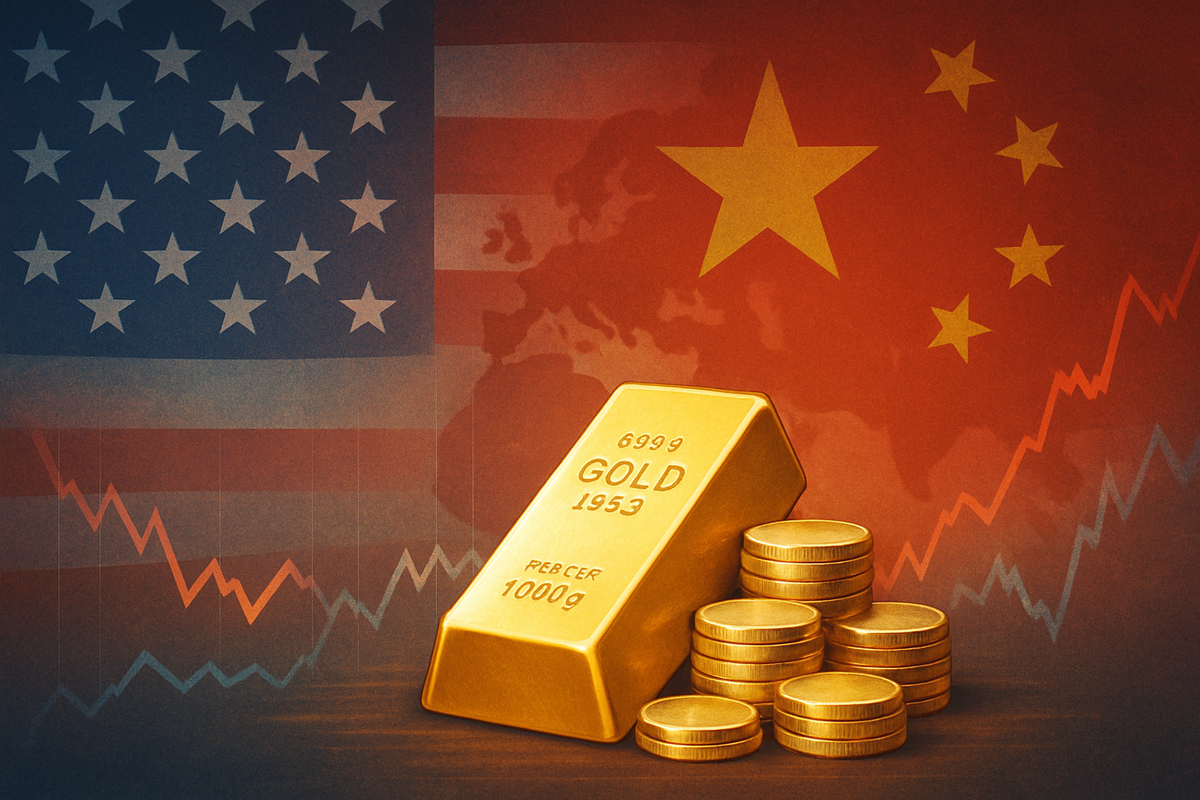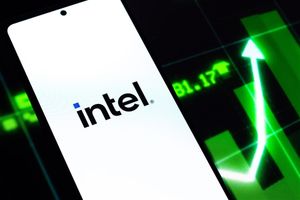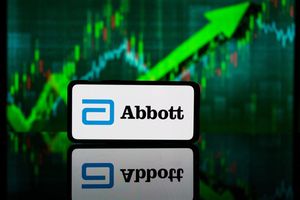
New York, NY – October 17, 2025 – The global financial markets have once again been gripped by the unpredictable currents of geopolitics, with gold prices experiencing a dramatic surge to unprecedented record highs earlier this week, only to see a cautious stabilization in the wake of shifting rhetoric from former President Donald Trump regarding China. This episode underscores gold's enduring role as a premier safe-haven asset, demonstrating its acute sensitivity to statements that signal potential shifts in international trade and diplomatic relations.
The initial rally, which saw the precious metal breach the significant $4,000 per ounce mark, was a direct response to a fresh wave of aggressive comments from Trump. His subsequent, more conciliatory remarks, however, prompted a slight easing in the market's flight to safety, leaving investors to ponder the delicate balance between political posturing and tangible economic impacts.
Trump's Rhetoric Ignites Gold Rush, Followed by a Moment of Calm
The catalyst for gold's recent stratospheric ascent was a series of hawkish declarations made by Donald Trump around Friday, October 10, 2025. In a move reminiscent of his previous presidency, Trump threatened to impose sweeping 100% tariffs on a wide array of Chinese imports and announced new export controls on critical software, accusing Beijing of "weaponizing" its own export controls on rare earths and critical minerals. These statements, widely interpreted as a precursor to a renewed and intensified trade war, immediately sent shockwaves through global markets.
Investors, seeking refuge from the anticipated volatility and economic uncertainty, flocked to gold, driving its price to an astonishing new record, well above its previous peak of approximately $2,067 per ounce set in August 2020 during the height of the COVID-19 pandemic. The precious metal registered an eighth consecutive weekly gain, with equity markets simultaneously experiencing significant downturns as the specter of trade conflict loomed large.
However, the market's trajectory took a nuanced turn over the weekend. On Sunday, October 12, 2025, Trump posted on Truth Social, stating, "Don't worry about China, it will all be fine! ... The U.S.A. wants to help China, not hurt it!!!" These more tempered words, while not reversing the gains, introduced a measure of temporary relief and uncertainty, leading gold to stabilize rather than continue its steep climb, as traders assessed the sincerity and potential longevity of the softened stance. The rapid shift in tone highlighted the highly reactive nature of the gold market to high-profile geopolitical statements, particularly from influential figures like Donald Trump, whose past actions have demonstrated a direct impact on global trade policies.
Mining Giants and ETFs Ride the Golden Wave
The surge in gold prices to record highs has created a significant windfall for companies directly involved in gold mining and investment vehicles tied to the precious metal. Gold mining giants such as Barrick Gold (NYSE: GOLD) and Newmont (NYSE: NEM) are among the primary beneficiaries. Higher gold prices directly translate to increased revenue and potentially fatter profit margins for these companies, assuming their production costs remain stable. This can lead to increased investor interest, driving up their stock valuations. Conversely, any sustained retreat in gold prices, even a stabilization after a peak, could temper these gains and introduce volatility to their share prices.
Exchange-Traded Funds (ETFs) like SPDR Gold Shares (NYSEARCA: GLD), which track the price of gold, also saw substantial inflows as investors sought direct exposure to the rising commodity. These instruments provide a liquid way for both institutional and retail investors to participate in gold's movements without owning the physical asset. Beyond direct gold exposure, companies in the broader financial sector with significant holdings in commodities or those offering hedging services might also see varying impacts depending on their specific strategies and exposures to market volatility. The geopolitical tensions, however, could negatively impact multinational corporations (e.g., in technology or manufacturing) with significant supply chains or market presence in China, as potential tariffs and trade restrictions could disrupt operations and reduce profitability.
Broader Implications: A Geopolitical Barometer
This recent gold rally and subsequent stabilization fit squarely within a broader industry trend where gold acts as a critical barometer for geopolitical risk and economic uncertainty. In an increasingly interconnected and volatile world, gold's role as a safe haven has been consistently reaffirmed. The event underscores how swiftly investor sentiment can shift in response to political rhetoric, particularly when it concerns major global economies like the U.S. and China.
The potential for renewed trade hostilities between the world's two largest economies carries significant ripple effects. It threatens to disrupt global supply chains, increase input costs for businesses, and potentially stoke inflationary pressures, all factors that typically bolster gold's appeal. Regulatory and policy implications are profound, as companies might need to re-evaluate sourcing strategies, manufacturing locations, and market access in anticipation of tariffs or other trade barriers. Historically, periods of heightened international tension, such as the Cold War era, the 2008 financial crisis, or the initial U.S.-China trade war under the previous Trump administration, have consistently seen gold prices appreciate as investors sought stability amidst turmoil. The current situation draws clear parallels, highlighting gold's consistent performance during times of stress.
What Comes Next: Navigating the Rhetorical Seas
Looking ahead, the gold market is likely to remain highly sensitive to further statements and actions from key political figures, particularly those concerning U.S.-China relations. In the short term, investors should anticipate continued volatility, with gold prices potentially swinging based on the ebb and flow of political rhetoric and any concrete policy announcements. A sustained period of aggressive posturing could propel gold even higher, while a genuine de-escalation of tensions might lead to a more significant correction from its current elevated levels.
In the long term, if geopolitical fragmentation and economic nationalism continue to define global relations, gold could maintain a strong upward trajectory as a perennial hedge against uncertainty and currency debasement. This presents both opportunities and challenges for investors. Those nimble enough to react to real-time geopolitical developments may find profitable trading opportunities, while long-term investors might consider gold a core component of a diversified portfolio designed to weather future storms. Potential strategic pivots for businesses might include diversifying supply chains away from single-country dependencies or investing in automation to mitigate tariff impacts. Scenarios range from a full-blown trade war with significant global economic fallout to a more managed, albeit tense, coexistence between the U.S. and China, each with distinct implications for gold.
Wrap-Up: Gold's Enduring Role in a Volatile World
The recent episode of gold's surge to record highs and subsequent stabilization following Donald Trump's comments on China serves as a powerful reminder of the precious metal's intrinsic value as a safe haven in times of geopolitical flux. It highlights that in an era of rapid information dissemination and political unpredictability, market reactions can be swift and dramatic. The market's immediate flight to gold underscored investor anxiety over potential trade wars and economic disruption, while the subsequent pause reflected a cautious optimism that rhetoric might not always translate into immediate, severe policy.
Moving forward, investors should remain vigilant, closely monitoring not just economic indicators but also the geopolitical landscape. The future trajectory of gold will likely be intertwined with the broader narrative of U.S.-China relations, global political stability, and central bank monetary policies. As the global economy continues to navigate a complex interplay of political, economic, and social forces, gold's role as a reliable store of value and a hedge against uncertainty appears more entrenched than ever.
This content is intended for informational purposes only and is not financial advice






